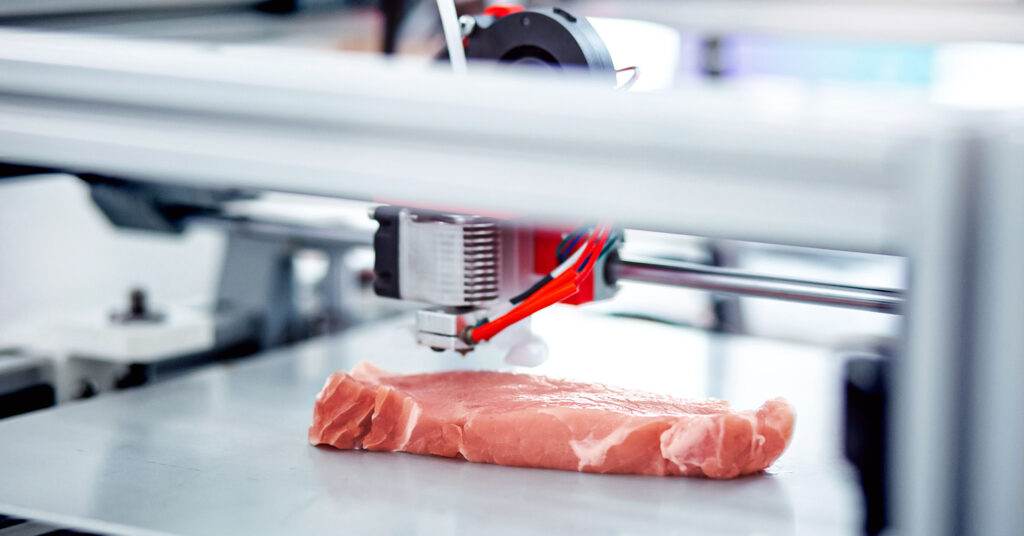Japanese scientists just created the world’s first 3D-printed wagyu beef.
Osaka University researchers used real bovine cell fibers from muscle, fat, and “vessel” cells to bioprint an identical replica of traditionally-farmed beef steak.
Wagyu (loosely translated as “Japanese beef”) comes from one of four specific cattle breeds. It also features a distinctive fat marbling (known as “Sashi”), taste, and texture. Based on these criteria, the new 3D-printed beef is definitively wagyu.
In a paper published by Nature Communications earlier this month, lead scientist Dong-Hee Kang explains the team’s methods and results in detail.

The world’s first 3D-printed wagyu beef
For step one, the team harvested “multipotent” bovine satellite and stem cells from Japanese black cattle. They use these to re-create every type of cell required in the manufacture of authentic meat.
The scientists then develop “tendon-gel-integrated bioprinting,” the actual building blocks of the final 3D-printed meat product. Finally, they combine and layer the individual cell fibers in such a way as to mimic the specific structure of wagyu beef.
This unique process gives producers the ability to create beef with incredibly subtle variations in composition—such as fat content and texture—based on health considerations and personal taste.
Much like other cultured meat production, the 3D printing of proteins provides a sustainable but texturally identical alternative to traditionally farmed animal products for dedicated meat-eaters.
What’s the beef with meat?
Food production (particularly animal agriculture, and particularly beef) negatively impacts the environment. Raising animals for meat emits greenhouse gas emissions and harmful pollution. The process is also deeply inefficient and uses up excessive land, water, and other increasingly finite natural resources.
In contrast, cultured and 3D-printed meat presents an opportunity to produce sustainable and resource-efficient proteins that are virtually indistinguishable from conventionally farmed meat. The process is slaughter-free, and inarguably has a smaller cumulative impact on animal welfare than factory farms and industrial agriculture.
“Over the past decade, cultured meat has drawn tremendous attention from the standpoints of ethics, economics, the environment, and public health,” writes Kang. “Cultured meat is highly sought after due to the possibility of imitating real meat through the manipulation of flavor, muscle/adipose cells’ ratio, and texture.”
This team isn’t the first to try and tackle the challenge of sustainable wagyu. Back in 2018, Eat Just began work with Japan’s Toriyama on cell-based beef, and food tech startup Orbillion Bio held an extremely successful public tasting event for its cultured wagyu back in April of this year.
Plant-based versions are already available. Top Tier Foods’ vegan “Waygu” beef is so impressive that it fooled Japanese-Canadian master chef Hidekazu Tojo, while JAT Oppenheimer’s V Meat version launched to Australian supermarkets back in 2020.
Venture capital funds are betting on the continuing and future growth of both vegan and cultured meat products. To learn more about the venture capital funds investing heavily in this market, read on here.


